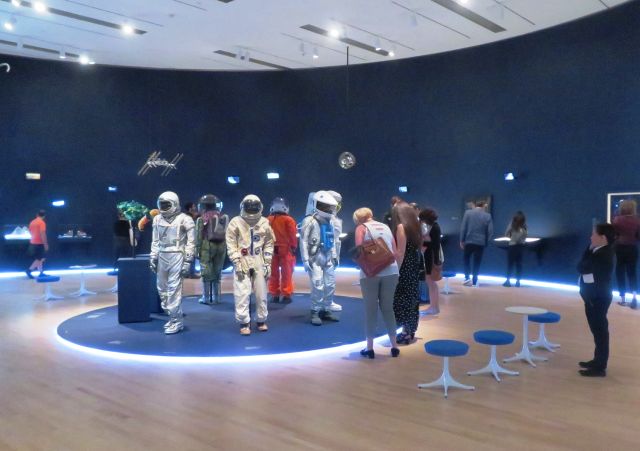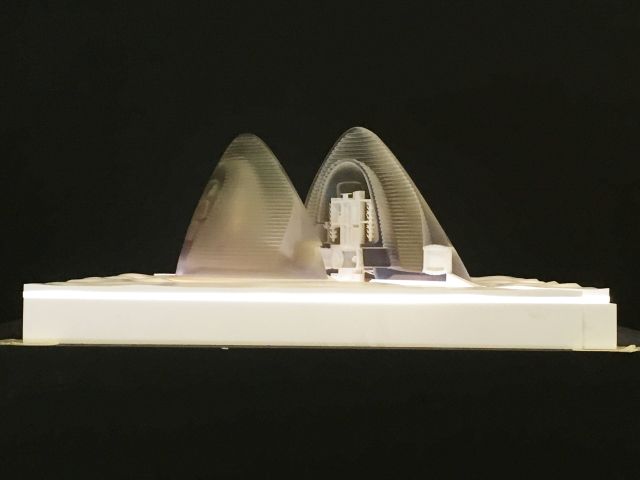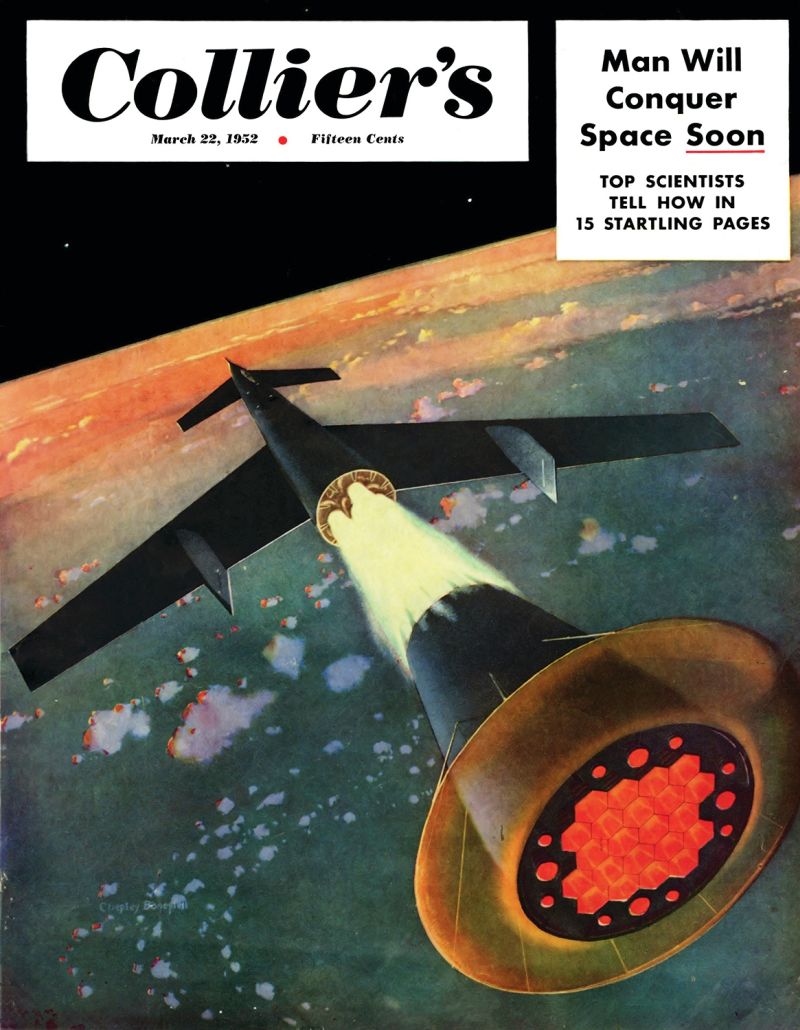
Space is Clearly the Place at SFMOMA
 |
|
|
If you’re looking for a museum exhibit that delves deeply into humanity’s fascination with outer space and our attempts to go there, 'Far Out, Suits, Habs, and Labs for Outer Space' is not it. But perhaps you’ve already guessed that, from the title.
Instead, this one-room exhibit, which circles a display of six space suits – some real, some from the movies, and some whose reality is hard to determine – proves to be an amusing, enlightening, thoroughly enjoyable portrayal of some recent and relatively recent attempts both to bring man into space and to think about man in space.
“Pioneering achievements have emerged from the field of space architecture, while artists and filmmakers have played equally vital roles in creating a guiding vision for future travel beyond Earth,” the curators note in an introduction. “This exhibit brings works that have stimulated advances in space design together with those that provide cautionary critiques of such efforts.”
"'Far Out: Suits, Habs, and Labs for Outer Space' celebrates the visionary ideas and ingenious solutions from architects, artists, and designers who dared to imagine life far out among the stars."
 |
|
|
The exhibit “presents realized and conceptual designs for space suits, habitats, and laboratories,” the museum says. Included are a wonderful series showing space exploration on the covers of Collier’s magazine from early 1950s, in the years before Sputnik.
The museum clearly expects the exhibit to be popular. It runs a full year, not closing till July 20, 2020.
The curators of the show are Jennifer Dunlop Fletcher, who organized a museum exhibition on Joe Eichler’s architect A. Quincy Jones a few years back, and Joseph Becker, both with the museum’s department of architecture and design.
There are images of the Apollo landing, which first put people on the moon and occurred 50 years before the exhibit’s opening, July 20 1969. Material from the archive of NASA Ames, the research center in Mountain View that helped put Americans into space, adds much to the exhibit.
“When Apollo 11 landed on the lunar surface fifty years ago, human kind became an interplanetary species,” the curators write.
You’ll see a full-sized replica of an Apollo program spacesuit, and another suit from the Mercury program that earlier sent astronauts into orbit.
Typical of the show’s sense of fun, the same display that shows replicas of real spacesuits also shows a suit from the iconic film '2001: A Space Odyssey.'
 |
|
|
Alongside this is something a bit harder to make out – an 'Umeko Suit' by Cristina de Middel from 2012, that harks back to an effort by the nation of Zambia in the 1970s to send people into outer space through a Zambian Afronaut program.
The Afronaut is a remarkable object in colorful quilted suit and silvery boots.
Small screens mounted on walls show excerpts of space-themed films, including 'Space is the Place,' focusing on the jazz bandleader Sun Ra, whose music included a chant using just that phrase. Sun Ra's interstellar explorations have influenced a later generation of Afrofuturists.
The habitations that have been designed, either seriously or with tongue in cheek over the years, for life in space are intriguing throughout. One of the designers shown here is none other than Raymond Loewy, better known for such elegant yet down-to-earth designs as an Electrolux refrigerator and the Studebaker Avanti.
But he also designed for NASA, producing such concepts as a 'space maintenance taxi' and a skylab.
A model for a 'lunar habitation base' designed in 2012 by Foster + Partners is a swirling, biomorphic, and compact structure, seen as a three-dimensional cutaway.
 |
|
|
Also appealing is the 'Mars Ice House,' the winner of a design competition in 2015 sponsored by NASA and American Makes. This model, from a New York venture that calls itself Space Exploration Architecture and Clouds Architecture, “is a proposal for a 3-D printed habitat on Mars. A robotic vehicle would mine the planet’s existing polar ice for water and use it to 3-D print the structure’s exterior.”
One of the stars of the exhibit is a series of illustrated light boxes that suggest some of the moral, more than scientific, challenges to man’s conquest of space. Is mining of asteroids a good thing? How about animals as test astronauts?
Design Earth, a project run by two architects, El Hadi Jazairy and Rania Ghosn, one based at MIT, the other at the University of Michigan, doesn’t fall into the trap that affects so much art with a message – which is sticking to the message but forgetting the art.
 |
|
|
These are delightful, must-see, glowing pieces, suggesting Renaissance astronomical charts and Surrealist landscapes and collages, with men turning into dogs, menageries in space vehicles, an octopus and the Tower of Babel framed in archways.
We see the American suburb migrate to outer space in a remarkable series of painting by the Los Gatos artist Rick Guidice. These show immense spaceships floating through space, where people create whole new earth-like neighborhoods to relieve over-crowding on their home planet.
The objects as seen floating through space are remarkable, but moreso are the environments themselves – rivers, creeks, traditional little houses, people enjoying a picnic.
One such illustration shows 1970s-style modern clustered housing in one of these floating worlds in outer space. But are there any Eichler homes in outer space?
Not as seen in this show.
- ‹ previous
- 534 of 677
- next ›



